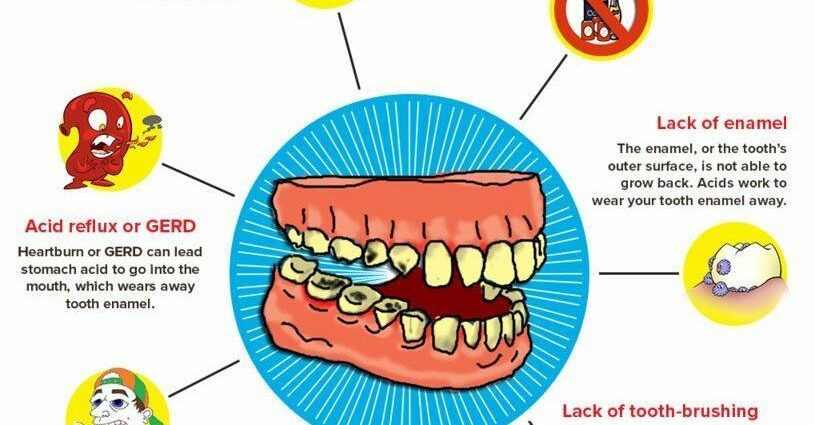Contents
Prevention and treatment of cavities
How to prevent the appearance of tooth decay?
An essential point to prevent cavities is to brush your teeth as soon as possible after each meal, without forgetting to change your toothbrush regularly, with fluoride toothpaste. The use of interdental floss is strongly recommended. Chewing sugarless chewing gum increases the amount of saliva in the mouth and helps neutralize acids in the mouth better. Chewing gum can therefore reduce the risk of cavities. But sugar-free chewing gum should not be a substitute for brushing!
Beyond good oral hygiene, it is necessary to avoid snacking and watch your diet. Eating sugary foods between meals that get stuck in the teeth greatly increases the risk of developing cavities. Certain foods such as milk, ice cream, honey, table sugar, soft drinks, grapes, cakes, cookies, candies, cereals or chips tend to stick to the teeth. Finally, babies who fall asleep with a bottle of milk or fruit juice in their bed are at risk of developing cavities.
The dentist can also prevent the appearance of cavities in the teeth by applying a resin to the surface of the teeth. This technique, mainly intended for children, is called furrow sealing. It can also offer a varnish application. The health professional can also advise a fluoride intake3,4 if necessary (tap water is often fluoridated). Fluoride has been shown to have a cario-protective effect.
Finally, it is essential to consult a dentist every year in order to detect cavities even before it is painful.
In France, the Health Insurance has set up the M’tes dents program. This program offers an oral check-up at 6, 9, 12, 15 and 18 years old. These preventive examinations are free. More information on the website www.mtdents.info. In Quebec, the Régie de l’Assurance Maladie (RAMQ) offers children under 10 the following program free of charge: one exam per year, emergency exams, x-rays, fillings, prefabricated crowns, extractions, root canals and oral surgery.
Caries treatment
Cavities that have not had time to reach the pulp of the tooth are easily treated and only require a simple filling. Once cleaned, the cavity is plugged with an amalgam or a composite. Thus, the pulp of the tooth is preserved and the tooth is alive.
For more advanced decay, the tooth canal will need to be treated and cleaned. If the decayed tooth is very damaged, devitalization and extraction of the tooth may be necessary. A dental prosthesis will be placed.
These treatments are generally performed under local anesthesia.
The pain caused by tooth decay can be relieved with paracetamol (acetaminophen such as Tylenol) or ibuprofen (Advil or Motrin). In case of abscess, antibiotic treatment will be necessary.










